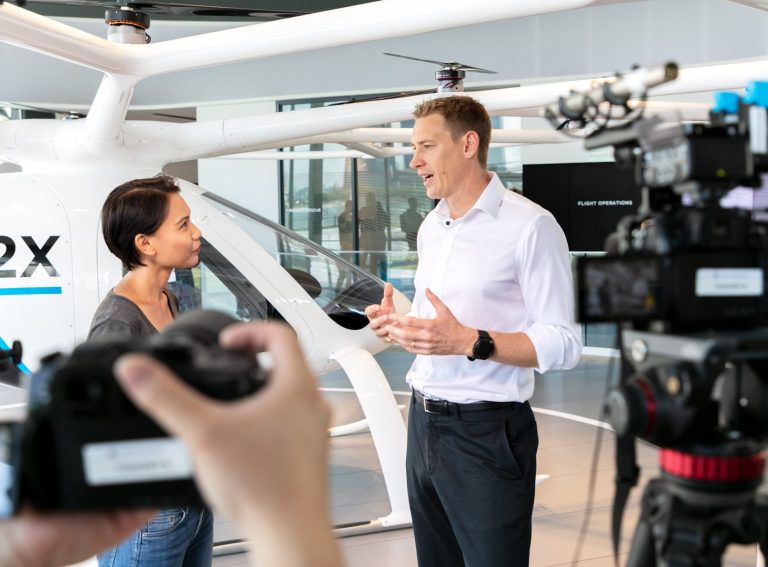Brandon Schuh’s passion for consumer product litigation pre-dates his time with Christensen Group but helps explain his growing involvement with the new mobility space.
Today, Schuh leads on three distinct practice areas for the Minneapolis-based insurance broker – liability, speciality and shared – with the shared practice relating closely to the world of new mobility.
The practice area is overseen by the sharing economy team who cover a variety of mobility-as-a-service formats including e-scooters and e-bikes, but also ride sharing, vehicle rental and last-mile delivery.
They have a cumulative 25 years experience in product liability as well as a combined 15 years in new mobility. Currently, the division covers 500,000 vehicles across all 50 US states and internationally too, with eyes set on further expansion.
Becoming new mobility specialists
The inspiration for creating a sharing economy team goes back to Schuh’s early days working as a risk manager for step ladder manufacturer Gorilla Ladders.
“Ladders are highly litigated products because they are so ubiquitous,” Schuh tells Zag Daily.
“And when you put people at a great height above ground you are going to run into incidents. This experience really immersed me in product liability and the consumer product litigation space.”
From there he moved onto brokerage firm Hays where he built a book of business assisting a wide variety of consumer product manufacturers with litigation and risk management. This earned Schuh positive referrals and soon enough he was securing work with hoverboard, e-bike and e-scooter developers.
“I gained a lot of experience with rideable technology as it crossed over really well with my background,” explains Schuh.
“There weren’t any shared operators at this stage, but these devices were popping up all over cities. Today, the distribution medium has changed because the devices are rentals, but the interaction between the public and the product was similar to my previous work.”
Arriving at Christensen Group
When Hays was bought out, Schuh started looking for a new role with smaller, more dynamic firms. He admits that he held no interest in being “a number in a system” and following the acquisition he moved onto Christensen Group in January 2019.
Christensen Group differs from many of its rivals in that it operates an employee stock ownership plan (ESOP) whereby the firm is 100% owned by its staff.
Schuh elaborates: “Every employee gets stock based on their salary and years with the business, which creates a very attractive retirement plan that few competitors can offer. When an employee leaves the company, we buy back their stock because we don’t want any external ownership.”
In his early days with the group, business grew rapidly and the firm began entering new markets across the US. Schuh believes its reputation as a specialist was a key selling point for the firm and today, Christensen Group is one of the country’s top 50 brokerages in terms of size.
“We are one of the largest brokers in the US that has no outside ownership,” says Schuh.
“The firm has eight offices now, but because of our specialist nature, we cross boundaries every day. I have very few clients in Minnesota, with many of them located on the coasts in California and New York.”
Schuh believes that their ESOP model helps the group attract the very best talent, and as a result its product, ideas and intellectual capital are of the highest level. This is true of the sharing economy team too, which has utilised its experience in the nascent field to revamp how insurance premiums are calculated.
Furthermore, the lack of an external means the company is solely focused on fulfilling the wishes of the client.
“We are not beholden to shareholders – we are beholden to ourselves and to our clients,” affirms Schuh.
Insurance in new mobility
Schuh believes that insurance providers were previously unprepared to offer a service suited to the new mobility space. As a result, high levels of risk were being placed on the market and this led to sizeable pay-outs which were not being covered by the premiums they were charging.
“In response, the premiums went from being very affordable to completely unaffordable at a flick of a switch,” explains Schuh.
This dramatic change caused real disruption to the new mobility market between 2019 and 2020, as shared operators were paying so much for insurance. It was at this time that Schuh began looking for solutions that would combat the obstacles impacting the industry. This started by working with the stakeholders and understanding how firms can spend less on claims, while concluding them in a quicker and more cost-effective manner.
“Insurance is one of the biggest lines on an operator’s P&L,” says Schuh, before adding that the nature of the expense can act as an effective barrier that ensures safety and quality standards are upheld.
He continues: “With the tools that my clients and the industry have implemented now, we have a much better understanding of the risks. Data collection means that we can be really granular with how we charge an operator based on how their riders are using the devices.”
Large payouts still exist due to the nature of the worst incidents. Paralysis tends to lead to the largest settlements rather than deaths, Schuh says, because of the assistance the victim will need access to for the rest of their life.
Rider Scores
Data collection means that new mobility firms and insurance providers know more about the risk involved, and the underwriter can set premiums based on how experienced the user is and where the ride takes place. Schuh believes it is only a “matter of time” until this data is used to create a rider rating, similar to the system used by rideshare apps like Uber.
“There is certainly some pushback in terms of how it is implemented but with the industry struggling to be profitable, the more granular you get from an insurance perspective the better the system will work for operators,” he adds.
Schuh cautions that there are concerns over the industry embracing a “big brother” status but admits that concerns over safety will likely lead to riders being forced to carry their own insurance liability.
“In California they passed a bill that requires riders to have $10,000 worth of liability insurance when riding a new mobility device, but the burden is being placed on the operators,” he says.
“I think it will have to iterate over time so that riders have to carry insurance, just as they would if they own a car.”
As the dynamic new mobility sector rapidly evolves, one thing remains clear – the insurance landscape will play a big part in the future success and profitability of the industry.





